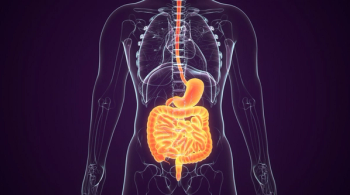
HIPEC Increased Survival in Gastric Cancer With Peritoneal Metastasis
Undergoing cytoreductive surgery plus hyperthermic intraperitoneal chemotherapy (HIPEC) resulted in improved overall survival compared with resection alone for patients with gastric cancer with peritoneal carcinomatosis, according to data presented at the 2018 Gastrointestinal Cancers Symposium.
Undergoing cytoreductive surgery plus hyperthermic intraperitoneal chemotherapy (HIPEC) resulted in improved overall survival compared with resection alone for patients with gastric cancer with peritoneal carcinomatosis, according to data (
“In selected patient with localized or limited peritoneal carcinoma disease from gastric cancer, HIPEC combined with complete cytoreductive surgery increased both overall survival and disease-free survival without increasing postoperative outcomes,” said Pierre E. Bonnot, of Centre Hospitalier Lyon-Sud, France, who presented the results, “[HIPEC] should be considered as a viable option for such patients.”
Patients diagnosed with gastric cancer with peritoneal carcinomatosis are able to achieve only poor outcomes with palliative chemotherapy. The efficacy of aggressive cytoreductive surgery combined with HIPEC is still debated. This study was designed to test the effect of HIPEC on survival and postoperative outcomes after complete resection compared with resection alone.
The researchers collected data from 277 consecutive patients with gastric cancer with peritoneal carcinomatosis taken from 19 French centers between 1989 and 2014. Outcomes were compared between 180 patients who underwent resection and HIPEC and 97 patients who underwent resection alone.
Bonnot and colleagues conducted a propensity analysis based on a set of variables directly linked to survival of gastric cancer with peritoneal carcinomatosis. Bonnot noted that at baseline, patients in the surgery alone group were older and less likely to have undergone neoadjuvant chemotherapy. However, after propensity analysis there was no difference between the two groups, he said. In addition, there was no significant difference between the two groups in the quality of cytoreduction.
At 3 years, HIPEC was associated with significantly improved overall survival with almost 26% of patients alive at 3 years compared with 13% of patients in the surgery alone group. The median overall survival was 18.8 months for HIPEC compared with 12.1 months for surgery alone.
The median disease-free survival was 13.6 months for HIPEC compared with 7.8 months for surgery alone.
Survival results at 5 years were consistent, Bonnot said. Almost 20% of patients were still alive at 5 years, and 15% of patients were considered cure by HIPEC compared with only 6.43% and 3.76% for surgery alone.
Patients assigned to HIPEC had no added morbidity and mortality compared with surgery alone.
Newsletter
Stay up to date on recent advances in the multidisciplinary approach to cancer.



